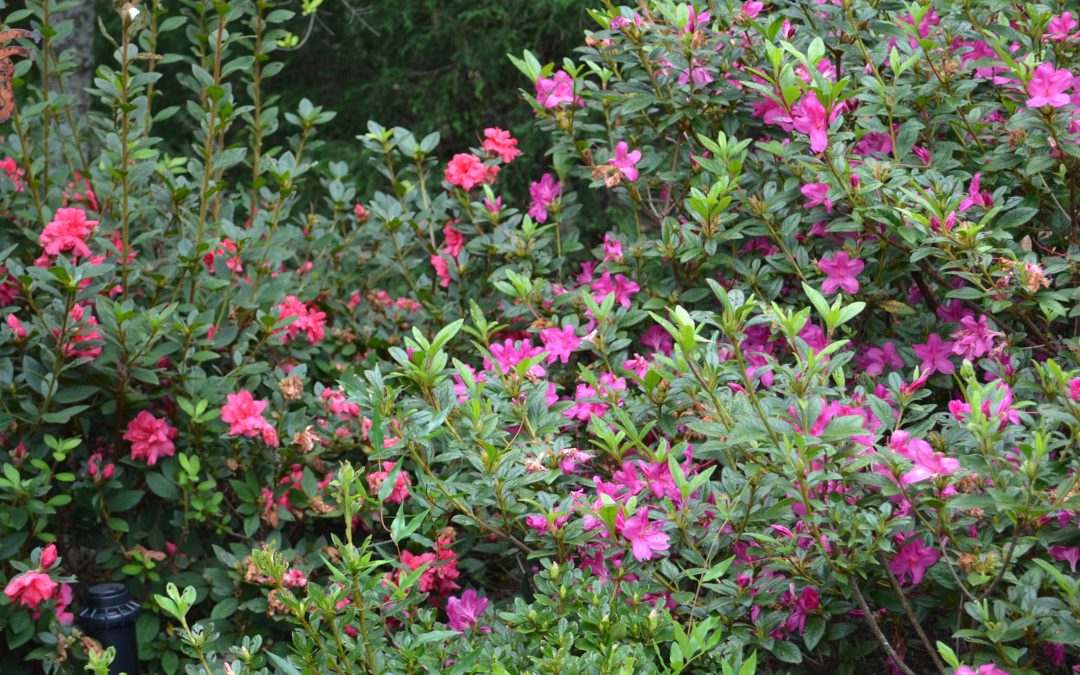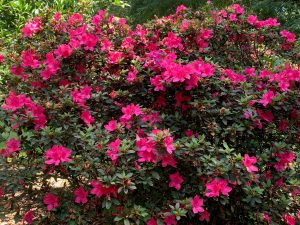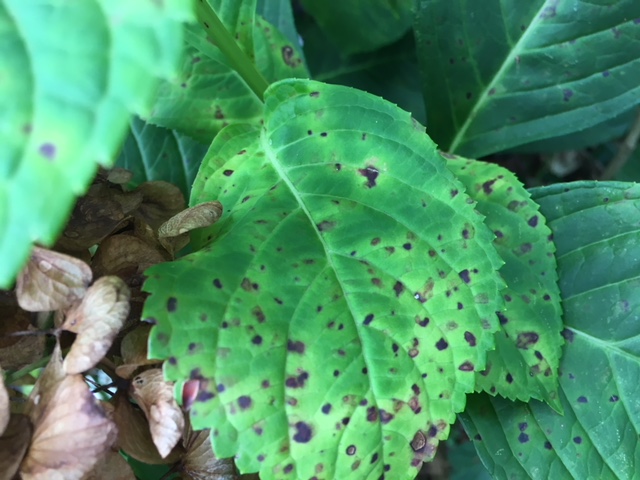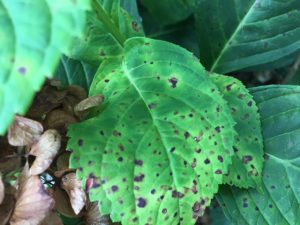
by Beth Bolles | Apr 18, 2024
When to prune a particular shrub can be a confusing practice for even the most experienced gardener. Luckily there are many plant guides to help remind us of pruning times or even a quick call to your local Extension office.
Now that we finally remember the best time to prune azaleas or French hydrangeas, the nursery throws us a loop with everblooming plants. Although not new, the Encore® series of azaleas and Endless Summer® collection of hydrangeas have the wonderful characteristic of blooming repeatedly throughout the growing season. When is the best time for pruning these repeat blooming shrubs?
In general, if you select your Encore® azalea carefully, it should need very little pruning. There are many sizes available to fit every space. Reduce your need for pruning by choosing a selection that will not outgrow your space. For example, Autumn Sangria® is a larger selection to at least 4-5 feet tall while Autumn Embers® is about 3 feet tall. If your plant needs a little selective pruning, the best time to prune is still after the first initial big bloom in April.

Encore Sangria has vivid pink flowers. Photo by Beth Bolles, UF IFAS Extension Escambia County.
Pruning time for Endless Summer is the same for other mophead hydrangeas even though it blooms on both old and new wood. You may selectively prune after the first bloom. It is always fine to deadhead faded blooms back to the first healthy buds.

by Larry Williams | Aug 20, 2018

Hydrangea leaf spot disease
Photo credit: Larry Williams
It is not uncommon to see leaf spots on your hydrangeas during late summer and fall.
These spots are caused by a number of fungal diseases. Plant fungi and wet weather go hand-in-hand. Florida’s high humidity, heavy dews and frequent rains during spring and summer provide perfect conditions to allow fungal diseases to flourish. Bacterial leaf spots can be part of this foliage disease mix, too.
Common foliage diseases seen on hydrangeas this time of year include Phyllosticta leaf spot, Target leaf spot, Bacterial leaf spot, Botrytis and Cercospora leaf spot.
These foliage diseases are the norm rather than the exception as we move into the wet summer months and on into fall. As a matter of fact, you would be hard-pressed to find any hydrangea in our area without some evidence of infection now.
This late in the year it is more of a “grin and bear it” problem. In other words, it’s too late to do much about the fact that your hydrangea plant has leaves covered in ugly spots. By now many of the infected leaves are turning brown, withering and dropping prematurely from the plant.
Cercospora leaf spot is one of the most common foliage diseases of hydrangeas. Along with most of the leaf spot diseases, it begins as small dark-colored specks on the leaves. The small specks generally go unnoticed. But as the spots continue to slowly enlarge, mostly maintaining a circular shape, they become more obvious. With heavy infection, individual spots can coalesce forming larger irregular shaped brown areas on individual leaves. The individual spots may have a purplish halo with gray center.
There are some fungicides that can help prevent these leaf spots. But you’d have to begin treatment early in spring before any leaf spots exist and spray the plant every 10 to 14 days during favorable disease development (humid, rainy weather), which is pretty much our spring and summer months. These types of diseases are prevented, not cured. That’s the “grin and bear it” part of waiting until now.
The fungus survives on infected leaves. So, the best thing to do now is to remove and dispose of infected leaves. Also, be careful to not wet the leaves when irrigating the plants during the growing season.
New leaves of spring should be spot/disease free as they emerge. But the cycle of life for these leaf spot diseases will again result in spotted/diseased leaves on your hydrangeas next summer and fall without persistent treatment.
The good news is that these leaf spot diseases normally do not cause permanent/long-term damage for hydrangeas. They just make the plant look ugly.
by Blake Thaxton | Mar 12, 2014
Oakleaf Hydrangeas (Hydrangea quercifolia) make a beautiful choice for the home landscape. They present great interest in all seasons of the year. Not only do they produce beautiful blooms in summer, but the plant also provides great fall color. When making a choice for a new edition to your landscape, select Oakleaf Hydrangea !

Jeff McMillian @ USDA-NRCS PLANTS Database
Oakleaf Hydrangea is native to Southeastern United States. I have personally observed hundred of Oakleaf Hydrangeas along streams and on the mountains at the Talledega National Forest in Alabama. When I saw them they were dormant, as it was February, but it would be a magnificent site when they are all in bloom.

Jeff McMillian @ USDA-NRCS PLANTS Database
Oakleaf Hydrangea blooms are magnificent panicles that change throughout the season. First creamy white color, turning to a pink and finally desiccating to brown. There is something attractive about the brown dried bloom and it holds on for quite some time. In winter, the exfoliating bark make it attractive even though it is without leaves. This trait, along with the dried out bloom, make it enjoyable throughout the entire year.






